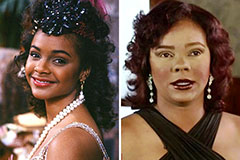Champagne, an emblem of celebration and sophistication, has captivated hearts and palates for centuries. Its delicate bubbles dance upon the tongue, whispering memories of joyous occasions and unforgettable moments. From its humble origins in the Champagne region of France, this effervescent nectar has ascended to iconic status, gracing gatherings worldwide.
The allure of Champagne lies not only in its delectable taste but also in its inherent grandeur. The flute, a classic vessel for this noble beverage, further enhances the experience, allowing its shimmering beauty to mesmerize. Each sip is a testament to the art of Champagne production, a harmonious blend of grapes, time, and tradition.
Uncorking Celebration : A Guide to Champagne Etiquette
Champagne, that effervescent elixir of celebration, deserves a certain savoir-faire. Whether are attending a festive gathering or simply observing a personal milestone, following champagne etiquette ensures a truly delightful experience.
To begin with, the act of uncorking Champagne is an art form in itself. Gently remove the foil, then use a bottle opener to release the cork. Aim the bottle at yourself to avoid any unwelcome bursts.
- After uncorked, allow the Champagne to breathe for a few minutes before presenting it. This allows the complex aromas to develop fully.
- Opt for chilled flutes or coupes to maintain the ideal temperature, and remember to serve Champagne with a light hand, leaving some space at the top.
- Toasting is an essential part of any Champagne celebration. Raise your glass, make eye contact with those around you, and propose a heartfelt sentiment.
From Vine to Glass: The Art of Champagne Production
The production of Champagne is a meticulous process, demanding expertise and dedication at every step. Beginning with the growing of carefully selected grapes in the region of France, each element plays a vital part in crafting this iconic sparkling wine.
- After that harvested, the grapes are gently crushed to yield a clear must.
- Following juice is then fermented twice, first in large tanks and then in bottles.
- The additional step is what gives Champagne its signature effervescence, creating those delightful bubbles.
Each bottle is then matured for a minimum of twelve months, allowing the wine to develop its complex flavors. Finally, Champagne undergoes a meticulous tasting process before being released to the world.
Champagne's Symphony of Flavors: Tasting Notes and Pairings
Uncork a bottle of Champagne and prepare to journey on a tasting experience like no other. The effervescence dances on your tongue, revealing a spectrum of delicate tones. From crisp berry notes to alluring toasty undertones, Champagne's flavor profile is truly remarkable.
To fully appreciate this bubbly masterpiece, consider pairing it with a variety of culinary delights. A classic pairing remains oysters on the half shell, the salinity of the oyster perfectly balancing the Champagne's acidity. For a more decadent experience, try Champagne with creamy cheeses such as Brie or Camembert, or even a light dessert like fruit tartlets.
Champagne's versatility extends far beyond these pairings. Its delicate flavors can elevate a wide range of dishes, from appetizers to main courses. Whether you prefer a crisp Brut or a richer Demi-Sec, there is a Champagne to suit every taste and occasion.
Explore Deeper into Champagne : Exploring Different Styles of Champagne
Champagne, champagne typically paired with celebrations and grand occasions, is a alcoholic drink that encompasses far beyond the confines of its iconic portrayal. While many drinkers immediately envision the refined fizz, the world of Champagne offers a diverse array of styles, each with its own unique character. From the vibrant and zesty Brut to the intense and multifaceted vintage Champagne, there's a suitable option for every palate.
- Discover the fine details that separate each style, from the fruity notes of Blanc de Blancs to the mineral complexity of Rosé Champagne.
- Embark a journey through the terroir that shape these distinctive champagnes.
- Enhance your appreciation for Champagne by grasping the differences in production methods and grape varieties.
History in Every Sip: The Legacy of Champagne Regions
Each bottle reveals a history intertwined with the very soil of the Champagne region. For centuries, vineyards have cultivated these picturesque hillsides, their legacy imprinted on every cluster. Traditions, passed down through generations, shape the process of transforming humble grapes into the celebrated bubbly nectar we know and love. From the rich terroir to the precise craftsmanship, each taste offers a window into the rich tapestry of Champagne's history.
The story behind every bottle is as fascinating as its taste. Winemakers continue to copyright these traditions, ensuring that each year tells a unique chapter in the ongoing saga of Champagne's legacy.
 Daniel Stern Then & Now!
Daniel Stern Then & Now! Lark Voorhies Then & Now!
Lark Voorhies Then & Now! Danica McKellar Then & Now!
Danica McKellar Then & Now! Danielle Fishel Then & Now!
Danielle Fishel Then & Now! Kelly Le Brock Then & Now!
Kelly Le Brock Then & Now!